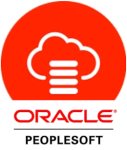
Application Server Load Balancing & Failover
PeopleTools has come a long way in regards to load balancing and failover. I honestly don’t know when they brought in these features, however, in 8.54 and above these failover and load balancing work and based on the testing I have done they work correctly. There are different options you can specify in the configuration.properties file to load balance requests and also for failover in case a domain is down.
Configuring Weighted Load Balancing
With weighted load balancing, you can set the “weight” of the load, or amount of requests, being directed to a particular server. Weight values are integers 1–10, with 1 being low and 10 being a heavy load. Servers that can handle extra work can take heavy loads, while servers that are either less powerful or are being used in other capacities can take lower loads. You specify weighted load balancing by modifying the server values in the psserver property in the PeopleSoft Internet Architecture configuration.properties file, using the following format.
psserver=HostServer1:Port1#Weight,HostServer2:Port2#Weight
Example: psserver=appserver1:9000#3,appserver2:9010#1 – In this case, appserver1 would receive 3x more requests than appserver2.
You an also specify strict failover assignments with weighted load balancing, with the following options:
Configuring Failover
You can configure with strict failover with weighted backup or strict failover with sequential backup. This is done by adding the failover servers in curly brackets at the end of the server entry:
psserver=<host>:<port>#wt{failover servers}
Example: With the failover string, you can set weighted backup by separating failover server with a comma (,).
psserver=Host1:Port1#Wt{Host3:Port3#Wt,Host4:Port4#Wt},Host2:Port2#Wt – In this case, Host 3 and Host 4 are failover servers when Host 1 is down.
Example: To set sequential backup, you separate multiple backup servers using a semicolon (;).
psserver=Host1:Port1#Wt{Host3:Port3;Host4:Port4},Host2:Port2#Wt – In this case, the system assigns Host 4 the requests when both Hosts 1 and 3 are down.